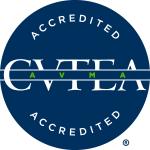
Contact Us
Kimberly Huston | Academic Program Director | Veterinary Technology
Phone: 330-339-3391
Email: khuston4@kent.edu

Kimberly Huston | Academic Program Director | Veterinary Technology
Phone: 330-339-3391
Email: khuston4@kent.edu
The Associate of Applied Science degree in Veterinary Technology prepares graduates to serve as veterinary technicians performing support functions, including routine laboratory and clinical procedures.
Do you love animals and want to be part of a veterinary care team? Our accredited Veterinary Technology program, offered at both the Tuscarawas and Trumbull campuses, is preparing students for careers in veterinary practices, animal hospitals and farms of all sizes.


The Associate of Applied Science in Veterinary Technology (VTEC) program is accredited by the American Veterinary Medical Association (AVMA) and approved by the Ohio Board of Regents. The program is offered in its entirety at both the Tuscarawas and Trumbull campuses.
To prepare Veterinary Technicians, our curriculum provides combined studies of college level general education courses and rigorous course work in science, animal health, management and veterinary medical concepts. Kent State University at Tuscarawas looks for highly motivated students interested in becoming Veterinary Technicians. The program also looks for individuals with animal experience, who will enjoy working with animals and who have an understanding of the field of veterinary technology and medicine.
Veterinary Technicians are involved in many different aspects of veterinary medicine and perform many of the duties vital to excellent patient and client care in a hospital setting. The term veterinary nurse has been used the help the public relate to what a veterinary technician does, but it would be more accurate to say that a veterinary technician is a nurse, dental hygienist, surgical assistant, scrub nurse, radiology technician, lab technician, microbiologist, client service specialist, communications expert, transcriptionist, pharmacology technician, manager, nutritionist, animal trainer, behavior counselor and sanitation specialist.
The Veterinary Technology program, which was first offered in Fall 2006, welcomes new students once yearly with 48 openings at the Tuscarawas Campus and 24 openings at the Trumbull campus.

Students interested in veterinary technology or becoming a Veterinary Technician should carefully review the Information Packet and Program Application. Applications and required forms are due in March each year.
Graduates of Kent State University’s Veterinary Technology program are eligible to take the Veterinary Technician National Exam (VTNE). Students must successfully pass the VTNE to be eligible for licensure in the state of Ohio; In Ohio, licensure from the OVMLB is required to legally practice as a Registered Veterinary Technician. Applicants should contact the OVMLB at http://ovmlb.ohio.gov/ for information regarding licensure in the state of Ohio. Graduates must also pass a criminal background check. Graduates register with the Ohio Veterinary Medical Licensing Board (OVMLB) to become a Registered Veterinary Technician (RVT) in the state of Ohio. Kent State’s graduates’ nationally competitive pass rates on the Veterinary Technician National Examination (VTNE) are a testament to the quality and rigor of this program.
Interested students can learn more about scholarships offered by searching Kent State Tuscarawas Scholarship Opportunities or by searching Kent State Trumbull Scholarship Opportunities. Additionally, students can find scholarship opportunities on the National Association of Veterinary Technicians in American website at www.navta.net. Students will need to create an account under the student section to be able to access the member-only sections of the website, which includes the scholarship information.
Interested students are encouraged to visit the campus they'd like to attend so they can see the facilities, meet the program director and learn more about the campus and program curriculum.
Those who complete the Associate of Applied Science degree in Veterinary Technology at Kent State University can benefit from specialized career opportunities in the veterinary technology industry.